Winemakers often obsess over every miniscule detail in the vinification process as they bid to create the perfect wine that expresses the majesty of its terroir in devastating fashion. But all those months spent analysing the soil, giving the vines tender loving care and experimenting to the nth degree to arrive at a flawless blend simply go out the window if the label design is not up to scratch.
Regardless of what they have been told, people judge a book by its cover and a bad label can kill a new wine’s chances of success. A wine label needs to grab people’s attention, spark intrigue, communicate a range of important messages and drive purchasing decisions. Therefore you could argue that the individual designing the labels is as important as the winemaker, if not more (although you probably wouldn’t want to say that to the winemaker’s face!).
It is an option easily overlooked by people seeking a career in the wine trade, but designing wine packaging can prove to be a fascinating, rewarding and celebrated vocation.
What skills do I need to thrive in this field?
Ideally you should have training in design or the fine arts before you consider embarking on this career path. Many potential employers will require a college degree or equivalent vocational training. An understanding of key design principles and the professional use of typography is vital. Many designers can rely on artworkers and pre-press teams to prepare their concepts into print form, but an understanding of disciplines like print and packaging is expected.
When it comes to setting yourself apart from the field, Dave Schuemann, owner and creative director at award-winning agency CF Napa Brand Design in California and author of 99 Bottles of Wine, says that the best wine label designers have the ability to tell a brand’s story through the packaging.
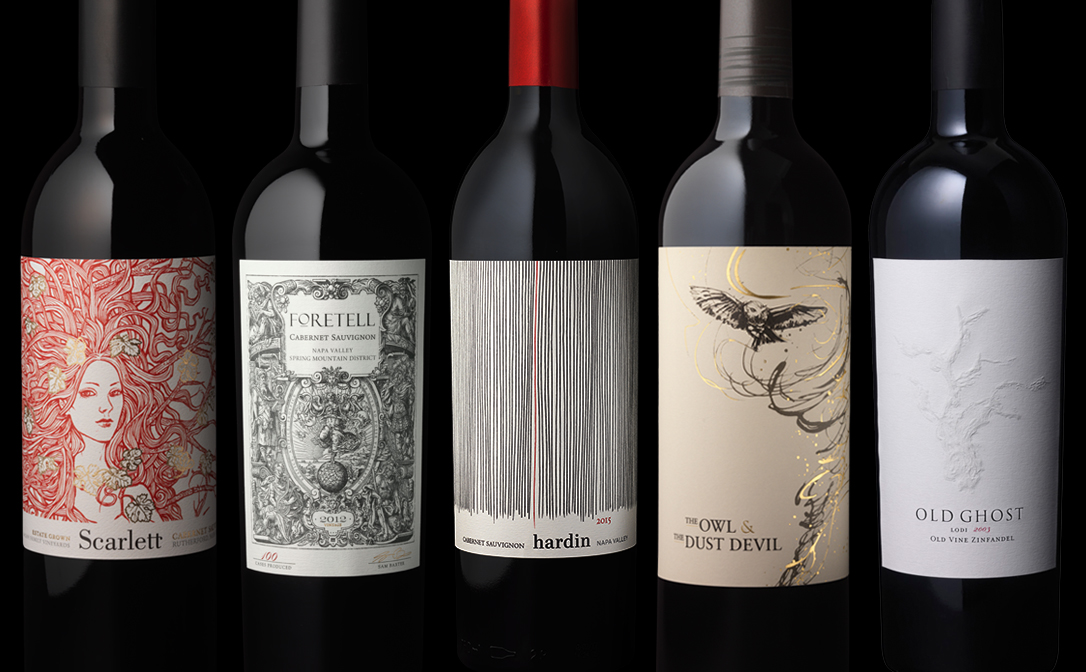
Wine labels need to tell a story and connect with the customer. Image: CF Napa
“Rather than simply decorative, the packaging created expresses the personality of the brand, the people behind it and of course what kind of wine, the style and quality of the product,” he says. Strong design and illustration skills are crucial, according to Schuemann, along with the consistency to produce truly great concepts over and over.
Rowena Curlewis, chief executive at another multi-award-winning agency, Denomination, which has offices in Australia and the UK, says designing wine labels is one of the most challenging pursuits within the design discipline. “For a wine label to work successfully it needs to have beautifully crafted typography as well as the ability to emotionally connect with a consumer,” she says.
“Designers who are successful at designing wine labels need to have the combined skills of patience, perseverance and creativity – patience and perseverance in continuously finessing typography until it is right, and creativity in addressing a brand’s challenge or opportunity.”
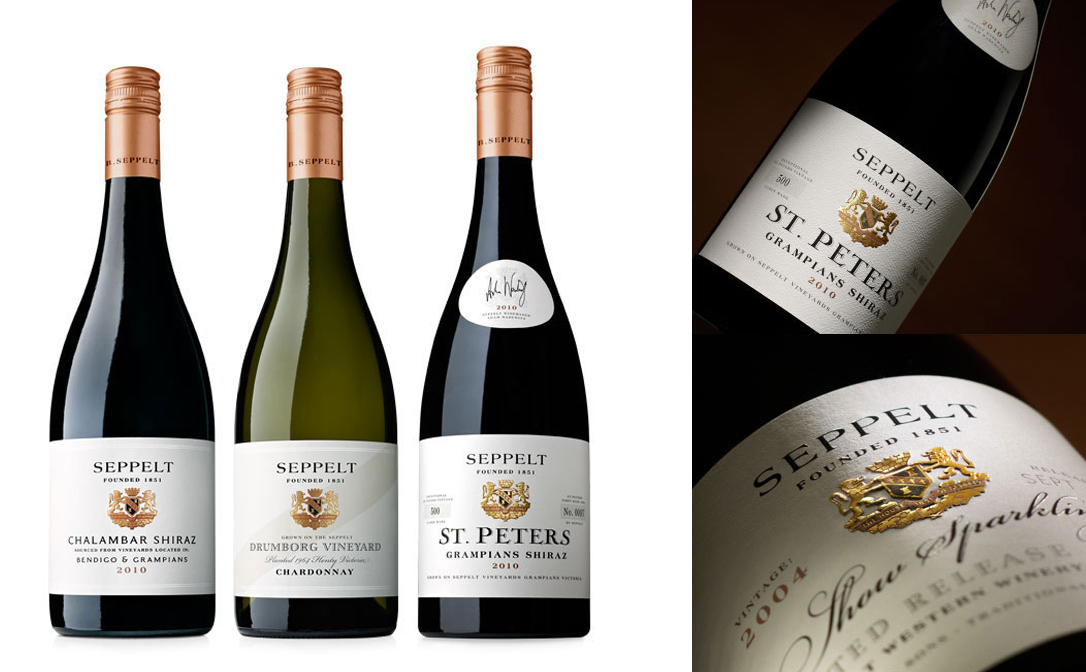
A designer must consider print finishes as part of their design solution. Image: Denomination
How much wine knowledge does a wine label designer need?
You might not think it, but to excel as a wine designer you need a strong understanding of the wine industry. “Having a good grasp of both wine language and the wine market is pretty mandatory for a wine designer,” says Curlewis.
“A sound knowledge of the bottle types that befit a particular region or varietal can help when communicating credibility. Knowing the dynamics of the market in which your brand is going to be sold is also important. With literally tens of thousands of brands available throughout the world it is impossible to be across all of these designs, however knowing the key players in each market is imperative in order not to inadvertently be too similar to an existing brand.”
The WSET Level 2 Award in Wines and Spirits is an excellent course for anyone keen to understand the fundamentals of wine label terminology, and you can you can build upon this knowledge further at Level 3. Wine marketing and the international business of wine is covered in the WSET Diploma. Schuemann says: “Wine label designers must possess an incredible amount of knowledge about the industry, wine, regions, flavour profiles and history.”
Strong design and illustration skills are cruicial, along with the consistency to produce truly great concepts over and over
What else might I need to know?
Legal knowledge is another crucial part of your education if you want to thrive as a wine designer. “Designing for wine labels is a unique industry since it is one of the few packaging goods products that is regulated globally,” says Schuemann.
“The designer must understand the complex legal requirements for the various countries, regions and even sub-regions. Then of course understanding the production side as well including bottling lines and how labels are applied, bottle label panels, how to set up artwork for effective printing, the various paper specifications that are required for wet or high humidity environments, closures and their performance and much, much more.”
If you are running a global agency like Denomination you need to keep abreast of developments around the world. “For example, what is allowed on a pack in Sweden is quite different from that allowed in Australia,” says Curlewis, but she adds: “Across the board, it is important that designers understand the basic tenants behind responsible labelling insuring graphics do not appeal to children, or are seen as being a mood enhancer.”
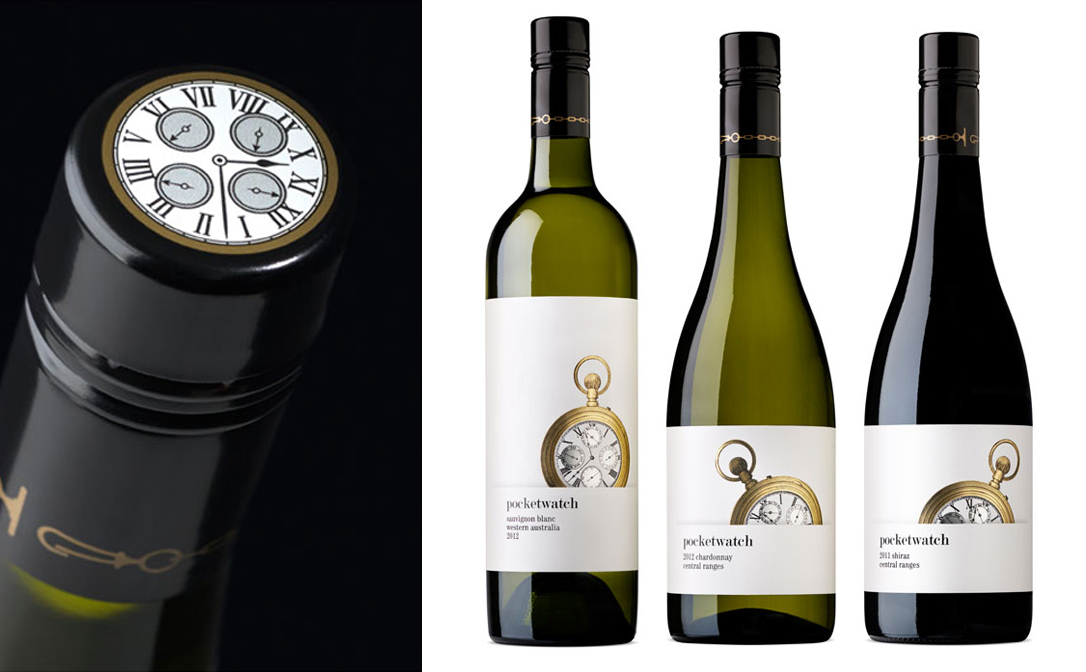
Closures and bottle shapes also form part of a wine's brand identity. Image: Denomination
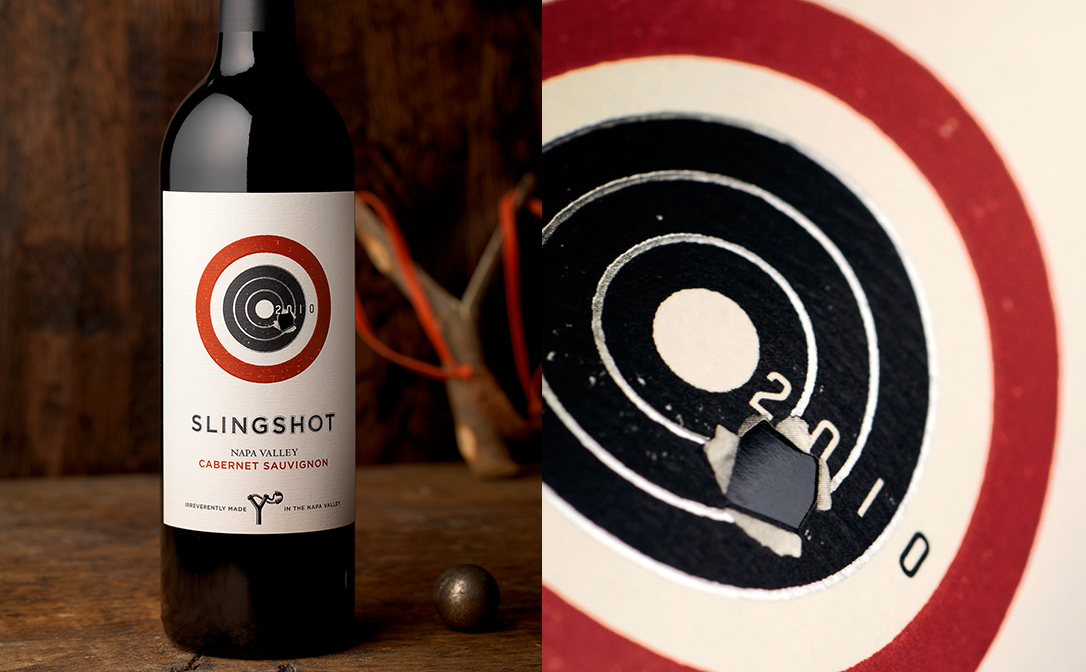
Die cuts and special finishes require an understanding of print production. Image: CF Napa
What makes a successful wine label?
This is the crux of the matter, and both CF Napa Design and Denomination have won a vast collection of awards and have a huge roster of clients from around the world, so it is worth paying heed to their advice. For Curlewis, a successful wine label is memorable, distinctive and can last a decade or more without needing to change. “Our design for Yabby Lake Vineyard was done in 2003 and 14 years later this label still looks as contemporary as the day it was designed,” she says.
Schuemann, who has helped his clients sell millions of cases over the years, wants a wine label to communicate the fundamental aspects of the brand, region and style but also to do so much more. “At its core a successful wine label is one that evokes an emotional response and connection with the consumer and creates the desire to purchase the wine,” he says. “I am most proud of the brands that CF Napa has created that have contributed to large increase in sales like Duckhorn and also the ones that have stood the test of time and achieved the coveted place in the wine industry as an icon, like our package for Sea Smoke Cellars.”
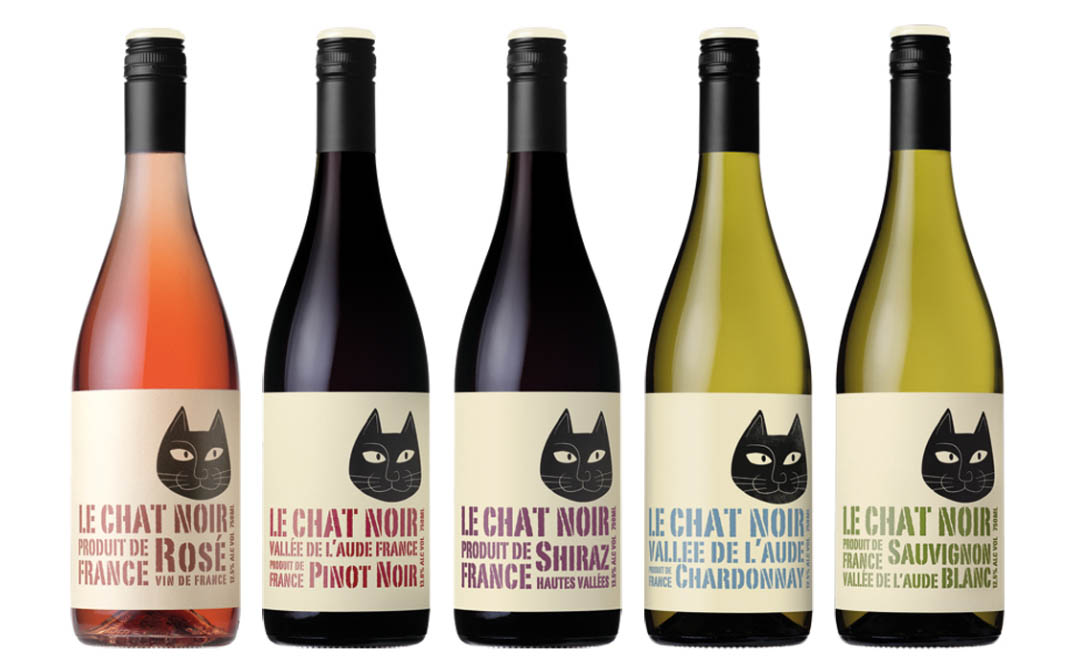
Illustration and typography are key elements of wine label design. Image: Denomination
What are the key considerations for designing wine labels that look great and drive sales?
You have to hone in on who is the target consumer, the story behind the brand and what is unique about the wine, the winery and the people that make it. In essence, its heritage and provenance. But you also have to pay attention to its quality and price, says Schuemann.
“The ability to connect with the target consumer, tell the brand’s story effectively via the package and the ability to stand out from the crowd of competitors while avoiding the pitfall of chasing short lived trends or worse appearing novelty,” he says. He aims to grab the attention of the target consumer by making them feel like it was made just for them. “This is not always about being the loudest most different thing on the shelf.”
Denomination, meanwhile, believes that wine is a luxury purchase at whatever price point it commands. “Wine labels that communicate the quality of the product through the incorporation of premium cues are better placed to convince consumers of their credibility,” says Curlewis.
However, premium cues alone will not drive sales: “A brand needs to have a distinctive and appealing presence and personality on shelf in order to attract the consumer to pick the bottle up,” she says.
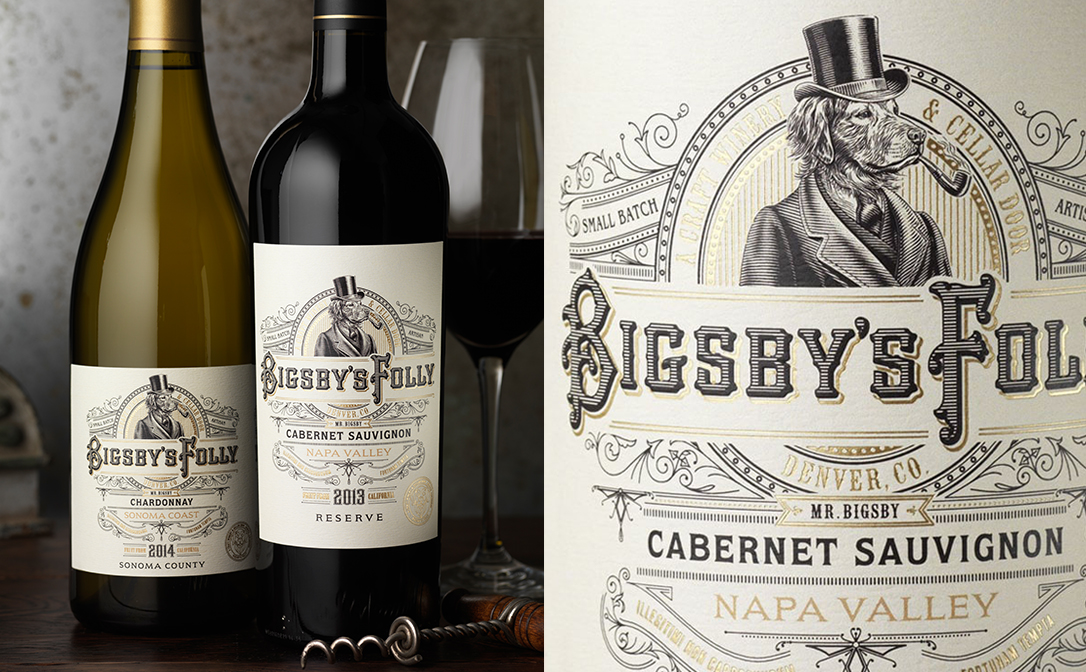
A wine label needs to convey a brand story in a small area. Image CF Napa
Blending a twin love of design and of wine could be one of the most rewarding careers imaginable.
Any advice for individuals hoping for a career in wine packaging design?
Essentially, you should become as knowledgeable and passionate as possible about the subject matter and devour anything you can get your hands on. “Read up as much as you can on wine,” says Curlewis.
“Get passionate about its beauty, the way that grapes grow, the difficulties that winemakers face, the joys and hardship of vintage, the individual beauty of each region, and the innovation that is happening in our industry. This knowledge will bring depth to your designs and will probably inspire creative ideas.”
It can be difficult to get a foot into this industry, so when you are starting out it is worth approaching smaller start-up wineries and offering your service on a freelance basis. This allows you to demonstrate proven experience in the field and build up a portfolio, which is vital to your chances of success.
Schuemann says: “Be a student of the industry. Learn as much as you can about wine, its history, the ever-changing legal requirements and the industry at large. Know the competitive landscape like the back of your hand. Be tirelessly passionate about solving your client’s challenges and wildly innovative and creative no matter how small a project challenge may first appear.”
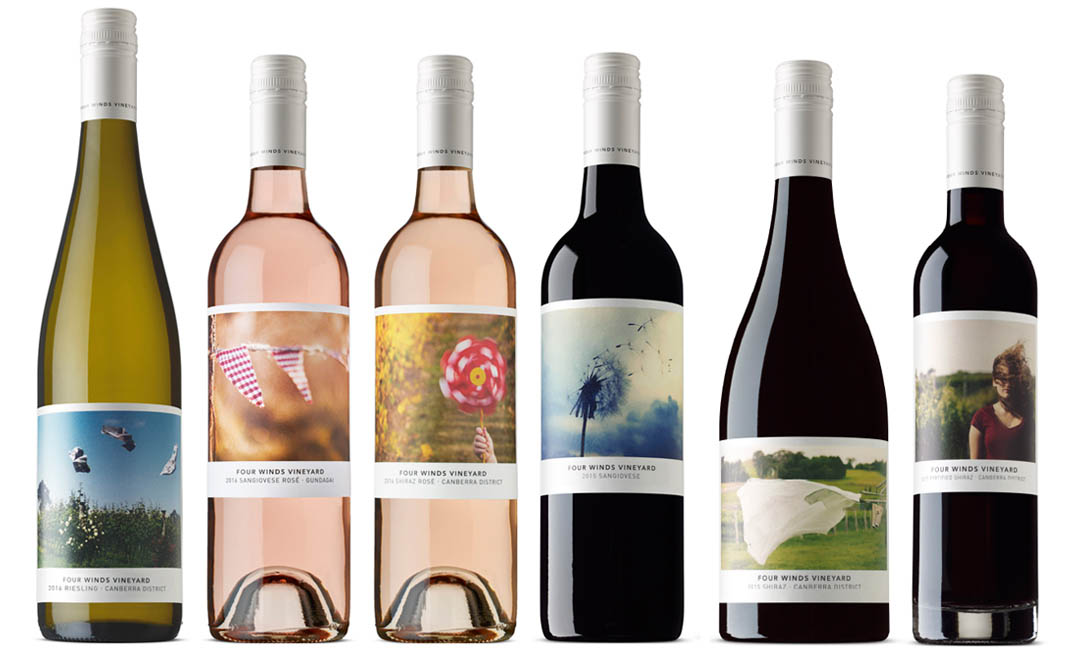
Photography is increasingly used on contemporary wine label design. Image: Denomination
What can I expect from a career in wine design?
If design is one of your strengths then it can catapult you into the fascinating world of wine as it plays such a vital role in the industry. Blending a twin love of design and of wine could be one of the most rewarding careers imaginable. After all, there are few industries that evoke more excitement or pleasure than wine.
Some wine producers handle design in-house, but most designers work for agencies and it can be stimulating to work in a dynamic environment with like-minded creatives.
“It can be very fulfilling and I still believe after 17 years of designing wine labels that it is one of the most gratifying industries to design within,” says Schuemann. “It’s a designer’s dream, if you ask me, but it comes with a lot of hard work, long hours at times and you must always, always push to reinvent the vernacular.”
Curlewis echoes his points, adding: “In the design world working on drinks packaging is one of the most fun and challenging things you can do. With this comes a lot of hard work, criticism and rejection. The development of a tough hide is essential: you need to be critical of your own work and accept the fact that other people, including clients, will be critical of your work too. However the joy of developing a cracking label design that works commercially as well as creatively makes the challenges worth it.”


